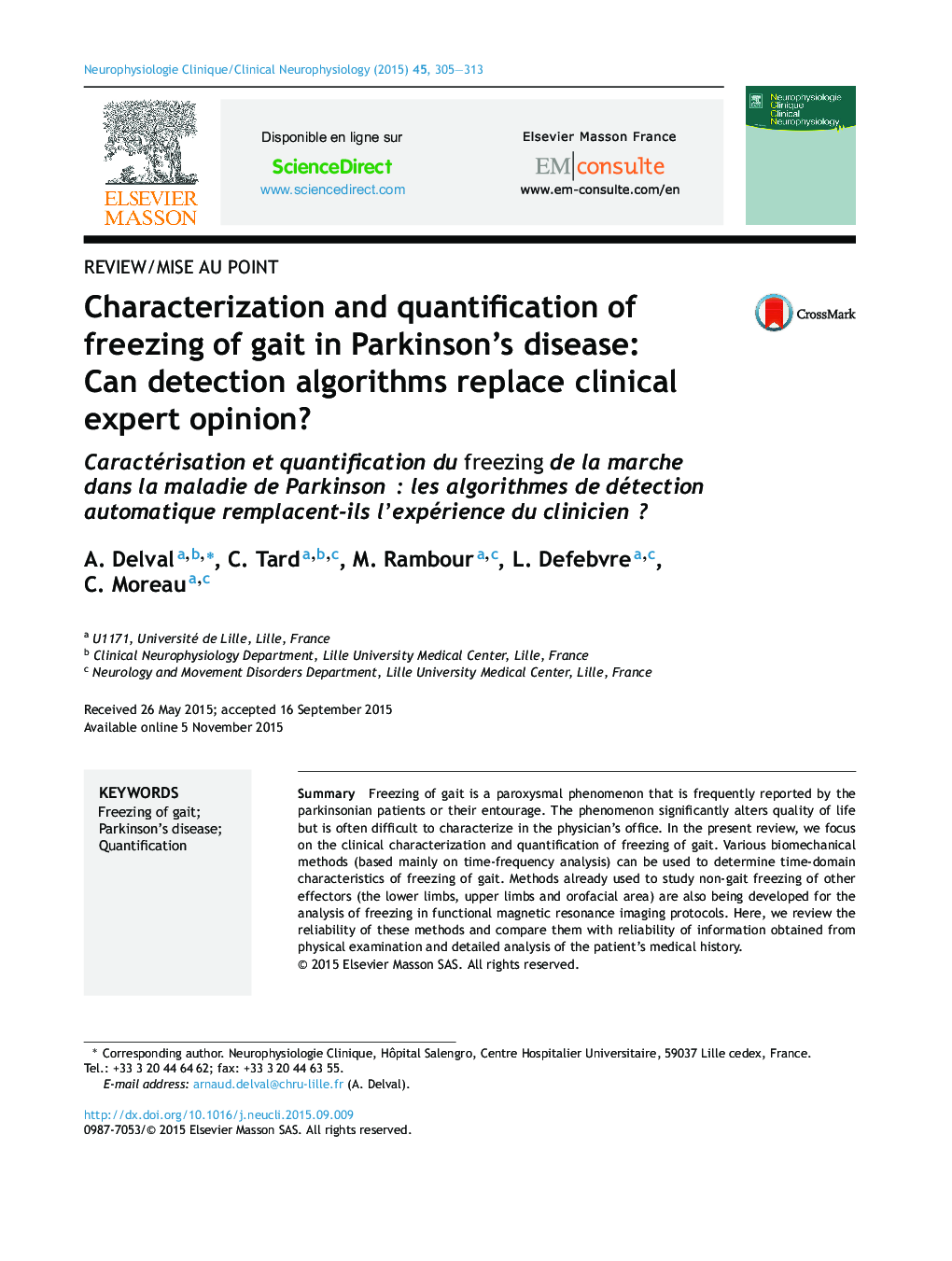| Article ID | Journal | Published Year | Pages | File Type |
|---|---|---|---|---|
| 3082040 | Neurophysiologie Clinique/Clinical Neurophysiology | 2015 | 9 Pages |
SummaryFreezing of gait is a paroxysmal phenomenon that is frequently reported by the parkinsonian patients or their entourage. The phenomenon significantly alters quality of life but is often difficult to characterize in the physician's office. In the present review, we focus on the clinical characterization and quantification of freezing of gait. Various biomechanical methods (based mainly on time-frequency analysis) can be used to determine time-domain characteristics of freezing of gait. Methods already used to study non-gait freezing of other effectors (the lower limbs, upper limbs and orofacial area) are also being developed for the analysis of freezing in functional magnetic resonance imaging protocols. Here, we review the reliability of these methods and compare them with reliability of information obtained from physical examination and detailed analysis of the patient's medical history.
RésuméLe freezing de la marche est un trouble paroxystique souvent difficile à mettre en évidence dans un environnement médical malgré le fait qu’il soit souvent rapporté par le patient ou son entourage et qu’il ait un retentissement important sur la qualité de vie des patients parkinsoniens. Dans cette revue, nous nous sommes focalisés sur la caractérisation et la quantification du freezing de la marche. Diverses méthodes étudiant sa structure temporelle, basées principalement sur les analyses temps-fréquence, sont présentées. Des méthodes utilisées pour caractériser des équivalents de freezing sur d’autres effecteurs (membres inférieurs et supérieurs, sphère orofaciale) sont aussi développées dans le but d’étudier le freezing en imagerie fonctionnelle. La fiabilité de ces méthodes est évaluée et comparée à l’évaluation clinique (incluant une anamnèse précise).
